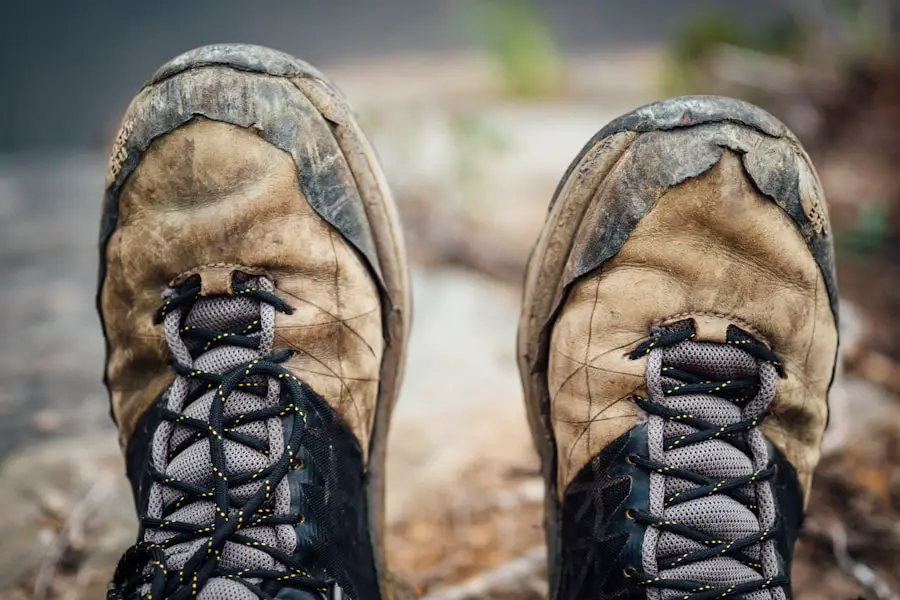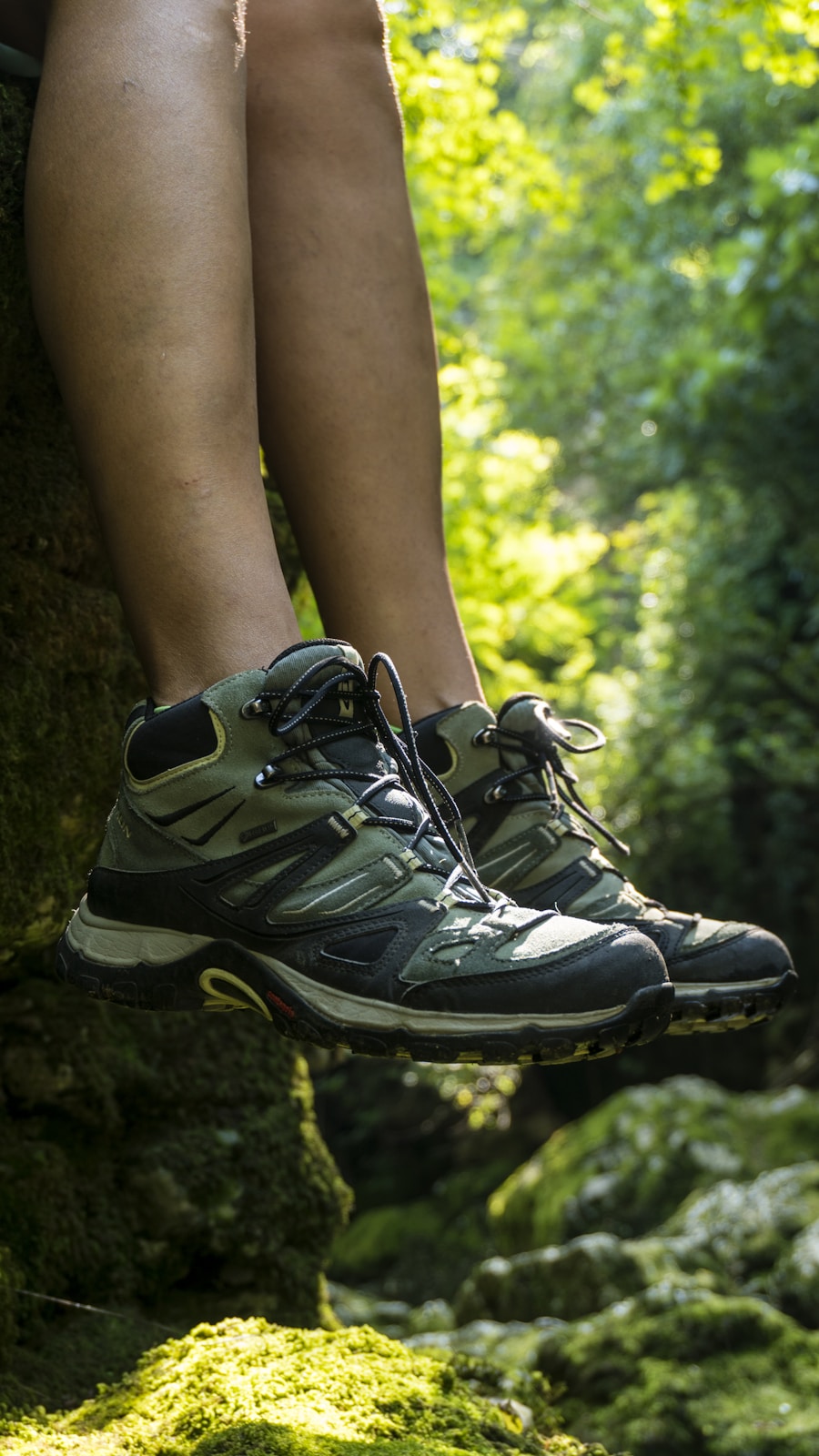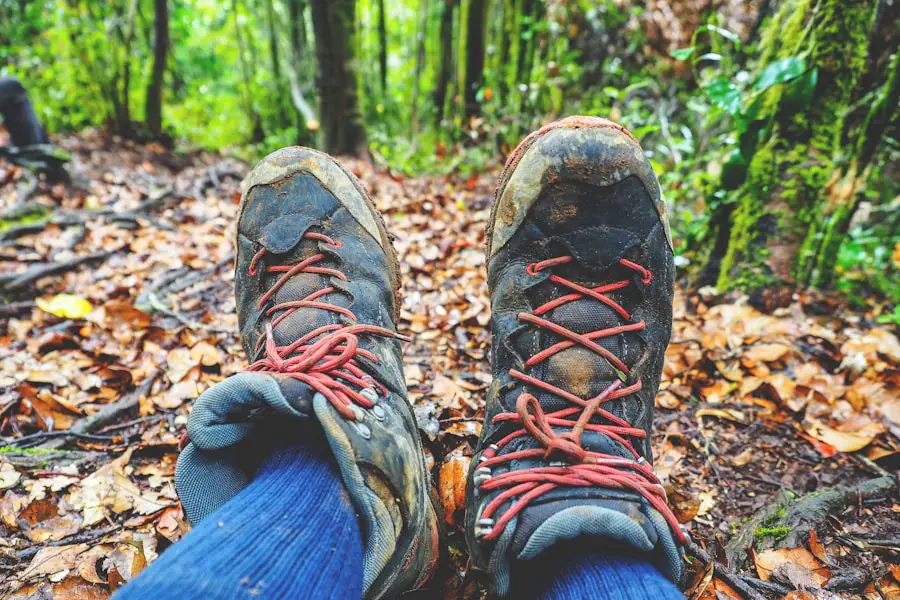The lifespan of hiking shoes is a critical consideration for outdoor enthusiasts, as these shoes are designed to provide support, traction, and protection on various terrains. Generally, the lifespan of a pair of hiking shoes can range from 500 to 1,000 miles, depending on several factors such as the type of shoe, the materials used in its construction, and the conditions in which they are used. For instance, lightweight trail runners may wear out more quickly than robust backpacking boots due to their construction and intended use.
Understanding the expected lifespan of hiking shoes helps hikers plan their gear purchases and ensures they have reliable footwear for their adventures. Moreover, the lifespan of hiking shoes is not solely determined by mileage. The frequency of use, the weight of the hiker, and the type of terrain can all significantly impact how long a pair of shoes will last.
Shoes used primarily on well-maintained trails may endure longer than those subjected to rocky, uneven surfaces or muddy conditions. Additionally, hikers carrying heavy loads may experience more rapid wear on their footwear compared to those on lighter day hikes. Recognizing these variables allows hikers to make informed decisions about when to invest in new footwear.
Key Takeaways
- Hiking shoes typically last between 500-1000 miles, but this can vary based on usage and care.
- Factors affecting hiking shoe longevity include terrain, frequency of use, and proper maintenance.
- Signs of wear and tear in hiking shoes include worn out treads, decreased support, and visible damage to the upper material.
- To extend the lifespan of hiking shoes, clean them regularly, store them properly, and avoid excessive exposure to moisture and extreme temperatures.
- Replace hiking shoes when they show significant signs of wear, loss of support, or discomfort during use.
Factors Affecting Hiking Shoe Longevity
Several factors contribute to the longevity of hiking shoes, with materials and construction being paramount. High-quality materials such as Gore-Tex for waterproofing or Vibram rubber for traction can enhance durability. Shoes made with synthetic materials tend to be lighter but may not offer the same level of durability as those constructed from leather.
The stitching and overall craftsmanship also play a significant role; well-constructed shoes with reinforced seams are likely to withstand more wear and tear than those with inferior construction. Terrain is another critical factor influencing shoe longevity. Hiking on rocky trails can lead to quicker degradation of the outsole and midsole cushioning.
Conversely, softer surfaces like dirt or grass may be less abrasive on the shoe materials. Weather conditions also play a role; prolonged exposure to moisture can weaken materials over time, while extreme heat can cause adhesives to break down. Understanding these factors can help hikers choose appropriate footwear for their specific hiking conditions and extend the life of their shoes.
Signs of Wear and Tear in Hiking Shoes

Recognizing the signs of wear and tear in hiking shoes is essential for maintaining safety and comfort on the trails. One of the most obvious indicators is the condition of the outsole. If the tread pattern is worn down or smooth, it can significantly reduce traction, increasing the risk of slips and falls.
Inspecting the outsole regularly for signs of uneven wear can provide insight into whether it’s time for a replacement. Another critical area to examine is the midsole cushioning. Over time, the foam in the midsole can compress and lose its ability to absorb shock, leading to discomfort during hikes.
If hikers notice increased fatigue or soreness in their feet or legs after using their shoes, it may indicate that the cushioning has degraded. Additionally, checking for visible cracks or separations in the shoe’s upper material can signal that the shoe is no longer providing adequate support or protection. Addressing these signs promptly can prevent injuries and ensure a more enjoyable hiking experience.
Tips for Extending the Lifespan of Hiking Shoes
| Tips for Extending the Lifespan of Hiking Shoes |
|---|
| 1. Clean your shoes regularly to remove dirt and debris that can cause wear and tear. |
| 2. Allow your shoes to air dry after each use to prevent moisture buildup and mold growth. |
| 3. Store your shoes in a cool, dry place away from direct sunlight to prevent material degradation. |
| 4. Use a protective spray or wax to waterproof your shoes and protect them from the elements. |
| 5. Rotate between multiple pairs of hiking shoes to reduce wear on any single pair. |
| 6. Replace worn out insoles to maintain support and cushioning for your feet. |
| 7. Avoid wearing your hiking shoes for activities that can cause excessive wear, such as running on pavement. |
To maximize the lifespan of hiking shoes, proper care and usage are essential. One effective strategy is to rotate between multiple pairs of shoes if possible. This allows each pair to dry out completely between uses, reducing moisture buildup that can lead to material degradation.
Additionally, using shoes specifically designed for different types of hikes—such as lightweight trail runners for day hikes and sturdier boots for backpacking—can help ensure that each pair is used within its intended limits. Cleaning hiking shoes after each use is another crucial step in extending their life. Dirt, mud, and debris can accumulate in crevices and cause materials to break down more quickly.
A gentle wash with mild soap and water followed by thorough drying can help maintain the integrity of the shoe’s materials. Furthermore, storing shoes in a cool, dry place away from direct sunlight can prevent materials from deteriorating due to heat exposure. These simple maintenance practices can significantly enhance the durability of hiking footwear.
When to Replace Hiking Shoes
Determining when to replace hiking shoes can be challenging, as it often depends on individual usage patterns and preferences. However, a general rule of thumb is to consider replacement after approximately 500 to 1,000 miles of use or when noticeable signs of wear appear. Hikers should pay attention to how their shoes feel during hikes; if discomfort or pain becomes more frequent, it may be time for a new pair.
Additionally, hikers should consider environmental factors when deciding on replacements. For instance, if a shoe has been exposed to harsh conditions such as saltwater or extreme temperatures, its lifespan may be shortened even if it hasn’t reached the mileage threshold. Regularly assessing both performance and physical condition will help ensure that hikers are equipped with reliable footwear that supports their adventures.
Proper Care and Maintenance of Hiking Shoes

Proper care and maintenance are vital for prolonging the life of hiking shoes. After each hike, it’s advisable to remove any dirt or mud from the shoes using a soft brush or cloth. This prevents debris from embedding itself into the materials and causing damage over time.
For waterproof shoes, checking that the waterproofing treatment remains effective is essential; reapplying treatments as needed can help maintain water resistance. Drying shoes properly after use is equally important. Avoid placing them near direct heat sources like radiators or in direct sunlight, as excessive heat can warp materials and weaken adhesives.
Instead, allow them to air dry at room temperature, removing insoles if necessary to facilitate drying. Regularly inspecting laces and eyelets for wear can also prevent unexpected failures during hikes; replacing worn components before they break can save hikers from being stranded on trails due to equipment failure.
Choosing the Right Hiking Shoes for Your Needs
Selecting the right hiking shoes is crucial for comfort and performance on the trails. Hikers should first consider the type of terrain they will encounter; rugged trails may require sturdy boots with excellent ankle support, while smoother paths might be better suited for lightweight trail runners. Additionally, understanding one’s foot shape—whether wide or narrow—can guide choices in fit and style.
Trying on multiple pairs before making a purchase is essential; what works for one person may not work for another due to differences in foot anatomy and personal preferences. It’s advisable to wear appropriate socks during fittings to ensure an accurate fit. Furthermore, considering features such as breathability, waterproofing, and cushioning will help tailor choices to specific hiking needs.
Investing time in selecting suitable footwear can significantly enhance overall hiking experiences.
Getting the Most Out of Your Hiking Shoes
To maximize the benefits of hiking shoes, it’s essential to understand how to use them effectively during hikes. This includes being mindful of terrain changes and adjusting pace accordingly; faster speeds on rough terrain can lead to increased wear on shoes. Additionally, being aware of one’s body mechanics—such as foot placement and stride—can help reduce unnecessary stress on footwear.
Incorporating regular inspections into pre-hike routines can also ensure that any potential issues are addressed before hitting the trails. Checking laces for fraying or ensuring that soles are securely attached can prevent mishaps during hikes. Finally, maintaining an awareness of personal comfort levels while hiking will allow individuals to recognize when their footwear may no longer be performing optimally, prompting timely replacements when necessary.
By following these practices, hikers can enjoy their adventures while ensuring their footwear remains reliable throughout their journeys.
When considering how much mileage you should get out of hiking shoes, it’s important to also think about the gear you’ll be carrying on your treks. A good hiking backpack can make a world of difference in terms of comfort and efficiency on the trail. TakeTravelInfo has a great article on the best hiking backpacks for multi-day treks that can help you choose the right one for your needs. Investing in a quality backpack can help prolong the life of your hiking shoes by distributing weight evenly and reducing strain on your feet. Check out their recommendations here.
Love travel? Join Our Facebook Community
FAQs
What factors affect the mileage you can get out of hiking shoes?
Factors that can affect the mileage you can get out of hiking shoes include the quality of the shoes, the type of terrain you hike on, the frequency of use, and how well you maintain and care for the shoes.
How long do hiking shoes typically last?
On average, hiking shoes can last anywhere from 500 to 1000 miles, but this can vary depending on the factors mentioned above.
What are some signs that hiking shoes need to be replaced?
Signs that hiking shoes need to be replaced include worn out treads, loss of cushioning and support, visible damage to the shoe’s structure, and discomfort or pain while wearing the shoes.
How can I extend the mileage I get out of my hiking shoes?
You can extend the mileage you get out of your hiking shoes by properly maintaining and cleaning them, avoiding excessive wear on hard surfaces, and rotating between multiple pairs of shoes to give them time to recover between uses.
What are some tips for caring for hiking shoes to maximize their lifespan?
To care for hiking shoes and maximize their lifespan, it’s important to clean them regularly, store them in a cool, dry place, avoid exposing them to extreme temperatures or direct sunlight, and follow the manufacturer’s guidelines for maintenance and care.
